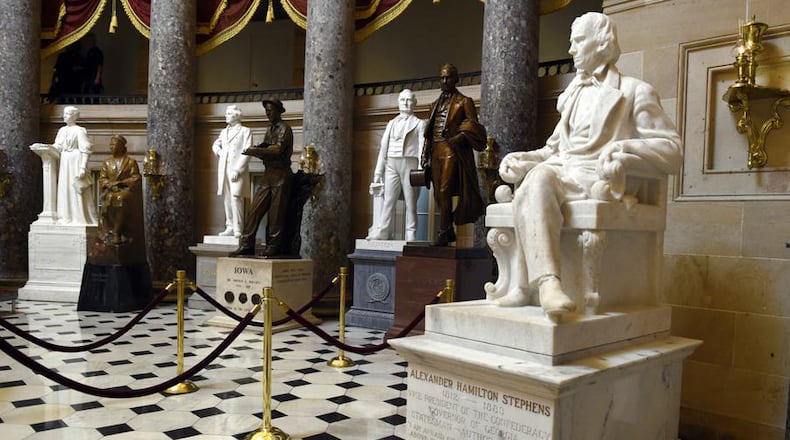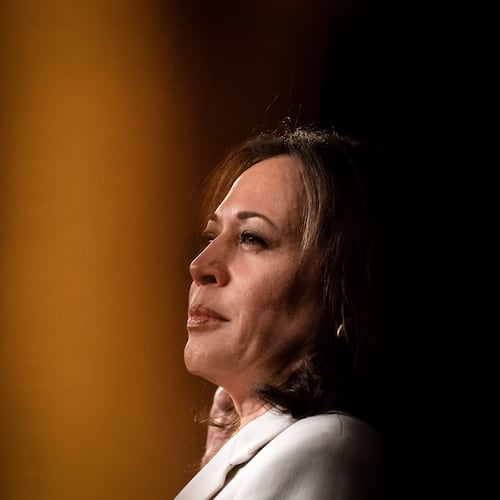WASHINGTON -- As the nation debates the placement of Confederate battle flags, Atlanta Democratic U.S. Rep. and civil rights legend John Lewis said it's high time to take a look at the statues under the U.S. Capitol dome, starting with one of Georgia's.
"I think it should move, be removed," Lewis said in an interview Wednesday. "I think there will be other symbols, not just from Georgia but other parts of our country [that are removed]. ... It’s the beginning of a movement that will help us move toward the realization that we’re one people, we’re one nation and we have to be sensitive to our own history."
Crawfordville native Alexander H. Stephens served in Georgia’s legislature and the U.S. Congress as a Whig, a Democrat and a Constitutional Unionist. After the state seceded, he was selected as the vice president of the Confederacy, even though he had been a staunch unionist.
In March 1861, Stephens delivered what is known as the “Cornerstone Speech” in Savannah, laying out the reasons for secession. According to a local newspaper account, it included this ugly passage:
“Our new government is founded upon exactly the opposite idea; its foundations are laid, its corner- stone rests upon the great truth, that the negro is not equal to the white man; that slavery -- subordination to the superior race -- is his natural and normal condition."
After the war, Stephens returned to the House and was later elected governor.
A marble statue of Stephens sits in the Capitol’s Statuary Hall. Each state gets two statues in the building. Georgia’s other honoree, Crawford W. Long, was a 19th-century physician who was the first to use ether in surgery.
Update: A Martin Luther King Jr. bust was later added to the Capitol by an act of Congress, to make three Georgians, but it's not one of the state's two official statues.
Lewis said the Stephens statue has bothered him for a long time, particularly as he has to explain to touring schoolchildren who Georgia's two statues are.
He said the Charleston shootings have helped spark conversation within the Congressional Black Caucus about removing some statues they find objectionable. Lewis said the CBC is working on a list to take to the Architect of the Capitol.
The Stephens statue has been in place since 1927. Typically statues are only removed if the state chooses to install a new statue to replace an obscure honoree. This year Arizona put up a Barry Goldwater statue, evicting World War I veteran John Campbell Greenway.
Lewis' view is not universal, even among Georgia's Congressional Black Caucus members.
Rep. David Scott, D-Atlanta, said the debate should remain focused on the Confederate battle flag because of its use as a symbol of white supremacy:
"And the Confederacy and the Civil War, we cannot erase that. It's there and it's a part of our history. Nobody took a statue and made it a symbol of racism. It's the flag. And we don't need to muddy the water with that."
Said Rep. Hank Johnson, D-Lithonia:
"As far as monuments and street names and building names, where do you stop? Where does it all lead to?"
Lewis said his problem is to have such statues in a place that is supposed to represent unity. "Some of the statues that are in the Capitol, they could be put in museums and different places," Lewis said.
The inscription on the Stephens statue, which has a prominent position in a high-traffic area of the Capitol, is a quote apparently attributed to him: “I am afraid of nothing on the earth, above the earth, beneath the earth, except to do wrong.”
The Latest
Featured



